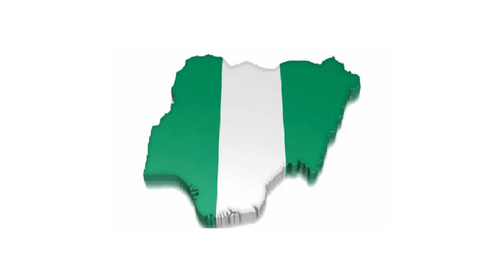The basic physical and organisational structures required for the smooth running of any society are generally referred to as infrastructure. These include structures like industries, buildings, roads, bridges, health services, governance, security and so on. Infrastructure is the enterprise or the products, services and facilities necessary for an economy to function according to Arthur O’Sullivan and Steven M. Sheffrin in ‘Economics: Principles in Action’, which was published in 2007 by Pearson/Prentice Hall in New York, USA. Infrastructure can be described generally as the set of interconnected structural elements that provide a framework supporting an entire structure of development. It is an important term for judging a country, region or state and individual’s development or status.
Infrastructure is an umbrella term for electricity, ICT, roads, railways, tunnels, irrigation, water supply and sanitation, seaports and airports, storage facilities, and oil and gas pipelines. Infrastructure can be defined as the physical components of interrelated systems providing commodities and services essential to enable, sustain, or enhance societal living conditions. Looking at it holistically, infrastructure facilitates the production of goods and services, and also the distribution of finished products to end-users (markets), as well as basic social services such as schools and hospitals; for example, roads enable the transport of raw materials to a factory and agricultural produce from farms to markets.
It is basically the technical structures that support a society, such as roads, water supply, sewers, internet service, electrical national grids, telecommunications, and so on and so forth. Some basic infrastructure provisions like green and blue infrastructure are contingent on modern living. Green infrastructure, researchers have shown, can help purify the atmosphere and help reduce the effect of greenhouse gases on climate change, while clean blue infrastructure can help provide healthy lives. Infrastructural development has been one of the difficult topics to discuss, especially on who should be responsible for its provision among the public (government) and private sector. Liveability is measured by quality-of-life factors, such as access to fresh water, food, housing, transport, healthcare, education, and safe and stable built and natural environment.
Proper infrastructural development leads to the sustainable use of natural resources and sustainable growth. Infrastructure brings about the exploitation of natural resources in a nation. It is the duty of the Federal Government to provide public infrastructure for the people to deliver services throughout the federation for the purpose of promoting national integration and developing a globally competitive economy where goods and products can easily transverse the length and breadth of the country. Chapter II, sub-section 15 (3) of the 1999 Constitution states, “For the purpose of promoting national integration, it shall be the duty of the state to provide adequate facilities for and encourage the free mobility of people, goods and services throughout the federation.”
The Charter of the United Nations, and the Universal Declaration of Human Rights, adopted by the General Assembly in 1945 and 1948 respectively, stated that housing is a human right. Nations, all over the world, therefore, strive to make sure that they provide housing for the masses. Housing quantity and quality adequacy have great potential to improve the standard of living of the people. An effective educational system can reduce the level of poverty in a nation and the provision of efficient health facilities can elongate the lifespan of the people. It is on this premise that globally, governments are involved in the direct provision of infrastructure to the people. Despite these numerous contributions of infrastructure to national development, there is a wide infrastructural gap in Nigeria like many other sub-Saharan developing nations.
In the Global Competitiveness Index 2021 – 2022 edition, the World Economic Forum placed Nigeria at 125th position out of 137 nations reviewed, using the sub-index of institutions, infrastructure, macro-economic environment, health and primary education, etc. World Bank Report 2018 stated that Nigeria required 17 million housing units to bridge her housing needs. Nigeria is endowed to generate 12,522MW of electric power from existing plants, but most days, the country is only able to generate around 5,348MW daily industry peak. This is about one-tenth of the actual electricity requirement in Nigeria. The provision of infrastructures such as housing, roads, offices, industries, hospitals, educational buildings, waste processing centres, sewerage, drainages, recreation grounds, markets, parks, transport etc can be used to generate employment.
All these infrastructures are grossly insufficient to meet the needs of Nigerians. Nigeria has a national road network of about 200,000 km on a land area of 923,376 square kilometres. This road network is inadequate for a country with about 216 million people and the biggest economy in Africa according to the United Nations estimate of July 2, 2022. Nigeria’s large infrastructure deficit has been a persistent discourse over the years. Infrastructure is important for faster economic growth and development, and poverty alleviation. Transport infrastructure in the form of land-ways, railways, airways, tunnel-ways and waterways, are necessary to connect supply chains and efficiently move goods and services across borders. Road infrastructure connects households across metropolitan areas to higher-quality opportunities for industry, employment, healthcare and education. Sustainable energy and modern building materials are ingredients for our environment and modern society.
Frankly speaking, corruption has been the major bane of infrastructure provision in the country. Nigeria’s infrastructural development is the most expensive in the world. On July 2, 2019, the Senate President, Ahmad Lawan, stated that the cost of executing projects in Nigeria is usually higher than in any other country in the world. For example, while a 340-kilometre standard gauge railway line in Ghana will be constructed at $2.2bn, the 156-kilometre standard gauge railway line between Lagos and Ibadan will cost $2bn. While it will cost Ghana $6.5m to construct 1km of railway line, it will take Nigeria $13.6m to construct 1km. The ease of doing business in Nigeria is poor and is a major bane of foreign direct investment in infrastructure development.
Insecurity has been a major problem in the country. The lack of capacity for public-private partnerships and concessions, which are seen as the solution to the infrastructure deficit, is also a major problem. The high rate of unemployment and the low rate of tax collection mean that most of the infrastructure can only be provided as social infrastructure. The people of Nigeria who are majorly poor cannot pay for economic infrastructure. The lack of maintenance economy and maintenance culture; over-dependence on foreign construction materials and high-interest rate of project funds due to stacking of money in various homes and offices instead of banks where bankers can use them as loans; and high rate of project abandonment due to lack of government continuity, account for high infrastructure deficit in Nigeria.











